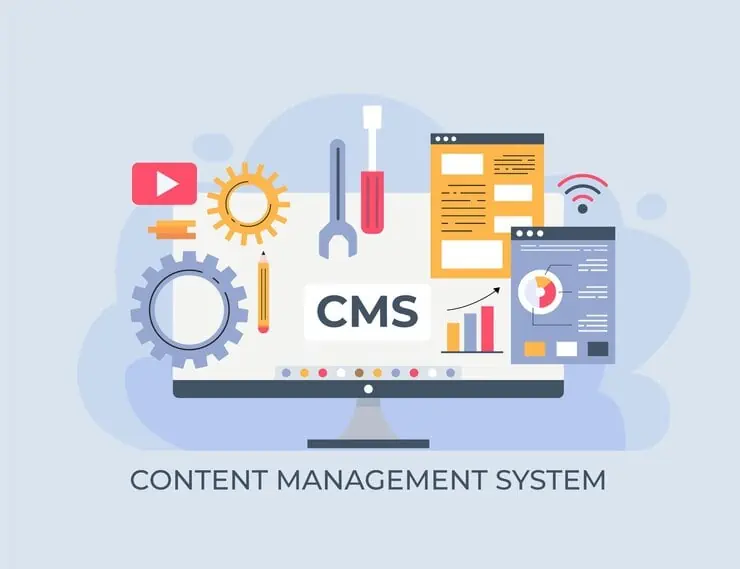Last updated on March 7, 2024 at 10:34 am
Over the past few years, the concept of ‘deskless work’ has substantially evolved from the outdated perception of inflexible, repetitive tasks to one that is redefined by empowerment and transformation through advanced technologies. Organizations that have recognized deskless workers as pivotal drivers of their operations have also realized the need to equip this critical workforce with digital tools that enhance productivity and job satisfaction.
These forward-thinking companies are increasingly turning to content management systems (CMS) to streamline communication, training, compliance, and a host of other deskless work functions. By centralizing important information and automating manual workflows, a well-implemented CMS can truly revolutionize how deskless jobs are performed while elevating the core function these positions fulfill for businesses.
In this post, we will explore how the implementation of a CMS tailored for deskless workers is allowing companies to reimagine entire operational models.
The Inefficiencies of Traditional Deskless Operations
Information Silos and Outdated Content
Traditional operations often rely on paper documents and static PDFs, which can introduce confusion, errors, and outdated information. Furthermore, the absence of appropriate technology can hinder the sharing of information among deskless workers, leading to information silos. Therefore, businesses must possess robust applications capable of facilitating swift information transfers and mitigating the inefficiencies associated with traditional deskless operations.
Time-consuming Processes and Manual Tasks
In around 60% of job positions, a minimum of one-third of task components can be automated. Manual processes involving multiple individuals are not only time-consuming but also costly compared to automated procedures. Gathering, organizing, and analyzing information inherently take up substantial time due to manual intervention. Repetitive tasks, information retrieval, and seeking approvals consume precious resources and time, negatively impacting efficiency, engagement, and morale.
Also Read: 6 Future of Work Predictions for 2024
Limited Visibility and Control
Visibility and control refer to a business’s ability to forecast its future performance. Conventional methods relying on paper-based and outdated information lead to restricted visibility and control. Furthermore, the absence of real-time data and centralized management hampers the optimization of the overall process.
Communication and Collaboration Bottlenecks
Inefficient communication can give rise to bottlenecks through various means. Possible consequences include misunderstandings, delays, and duplicate efforts resulting from conventional operations. Moreover, teams working in isolation and with ineffective communication channels can lead to delays and misalignment, posing risks and generating issues and conflicts while diminishing creativity, innovation, and problem-solving capabilities. According to recent statistics, a significant majority of deskless workers (84%), report insufficient direct communication from their managers. This insufficiency directly contributes to reduced morale, engagement, and employee satisfaction levels.
Also Read: Frontline Workers: Who They Are & How to Reach Them
Inconsistent Quality and Standardization
Implementing standardized processes involves formalizing and documenting each step, which is often challenging to achieve in traditional operations. The inherent inconsistencies and standardization problems in traditional processes result in variations in manual procedures and knowledge sharing, ultimately impacting quality and performance.
CMS: A Powerful Tool for Streamlining Deskless Operations
Centralized Information Hub
It serves as a comprehensive repository for policies, procedures, training materials, and operational data. Authorized personnel have the capability to store, retrieve, share, and collaborate on documents, files, records, and multimedia content from a centralized hub. This facilitates efficient teamwork, informed decision-making, and improved enterprise management by enabling your staff to promptly locate, retrieve, and engage with critical documentation.
Mobile-first and Accessible
By prioritizing mobile compatibility and accessibility features, organizations ensure that crucial information is readily available to deskless workers, regardless of their location or device. This approach not only enhances the efficiency of communication and task management but also caters to the diverse needs of a mobile workforce. A mobile-first CMS empowers deskless employees with seamless access to relevant resources, fostering improved collaboration, productivity, and overall operational agility.
Automated Workflows and Task Management
By leveraging automated workflows, organizations can enhance efficiency and reduce manual intervention in routine processes. Task management features empower teams to coordinate seamlessly, assign responsibilities, and monitor progress effortlessly. This streamlined approach not only saves time but also ensures that deskless workers can focus on their core responsibilities without being burdened by unnecessary administrative tasks.
Real-time Data and Analytics
By providing real-time data, the CMS empowers decision-makers to respond promptly to changing circumstances, enhancing operational efficiency. The analytics capabilities embedded within the system offer data-driven insights, enabling organizations to make informed decisions, optimize workflows, and adapt strategies for greater productivity. This emphasis on real-time data and analytics positions the CMS as a powerful tool in the dynamic landscape of deskless operations, driving agility and informed decision-making
Also Read: 5 HR Technology Trends for 2024
Improved Communication and Collaboration
A sophisticated CMS acts as a powerful catalyst, breaking down communication barriers and fostering seamless collaboration among deskless teams. With centralized content repositories and real-time updates, team members gain immediate access to critical information, reducing the risk of misunderstandings and delays. Enhanced collaboration tools within the CMS empower deskless workers to share insights, coordinate tasks, and stay aligned on projects.
Standardized Processes and Templates
By implementing standardized processes and templates, organizations can establish a cohesive framework that ensures consistency and efficiency across various tasks. This not only simplifies complex workflows but also enhances the overall quality and accuracy of work undertaken by deskless teams. The utilization of standardized templates promotes a streamlined approach to common tasks, reducing the likelihood of errors and accelerating the pace of operations.
Version Control and Document Tracking
A centralized CMS allows teams to track changes, manage different versions of documents, and maintain a clear audit trail. By providing a structured approach to version control, it minimizes errors, enhances accountability, and facilitates seamless collaboration among deskless workers.
How CMS Streamlines Specific Deskless Operations
Field Service and Maintenance
CMS streamlines field servicing and maintenance by efficiently scheduling appointments, accessing comprehensive customer data for personalized service, updating reports promptly, and ensuring seamless management of spare parts inventory to minimize downtime.
Retail and Hospitality
CMS empowers deskless employees with instant access to product information, facilitates smooth inventory management, enables quick updates to menus and promotions, and gathers real-time customer feedback for swift adjustments, enhancing overall customer satisfaction.
Logistics and Transportation
CMS plays a vital role in deskless operations by leveraging built-in analytics. It aids in tracking shipments, optimizing routes for efficient delivery, providing real-time updates on delivery status, and ensuring compliance with safety protocols and regulations, thereby mitigating legal risks.
Construction and Manufacturing
For deskless employees in construction and manufacturing, managing and completing documents can be arduous. An effective CMS alleviates this challenge by providing access to crucial resources such as blueprints and safety manuals, tracking equipment efficiently, managing workflows seamlessly, and facilitating the sharing of best practices, thereby optimizing overall productivity and safety.
Overcoming Challenges and Implementation Tips
Change Management and User Adoption
The two prevalent challenges in enterprise content management are user adoption and change management. These issues stem from employees’ reluctance to embrace new working methods, particularly when it involves unfamiliar tools and technologies. A comprehensive strategy should be devised to ensure employee buy-in and facilitate a successful transition to the new system. Adequate training, support, documentation, and incentives should be provided to all relevant staff members to foster their proficiency with the new technology.
Data Migration and Integration
Most teams and departments in many firms have their own content management systems and archives. This leads to important information becoming locked up in these silos, unavailable to other staff members who might require it, hindering productive teamwork, knowledge exchange, and overall organizational effectiveness. Organizations need to adopt a centralized application and integrate it with other primary systems in the company to tackle this issue. This will require breaking down information silos and trying to eradicate them as much as possible.
Customization and Tailoring
For businesses dealing with large amounts of data, implementing a customized content management system can prove to be an invaluable time-saving tool. By tailoring the layout, design components, and overall style of the CMS, you can ensure that your CMS accurately represents your company’s objectives and core values. However, it is worth noting that not all CMS platforms offer customization or tailored solutions. Consequently, it is crucial to select an appropriate CMS and customize its features to meet the distinct requirements of various teams and operations, thus effectively overcoming potential challenges.
Security and Compliance
In the first quarter of 2023, a staggering number of over six million personal information records were stolen worldwide as a result of data breaches. Hence, to safeguard security and maintain compliance, it is imperative that the CMS ensures utmost data privacy of deskless employees, grants access control exclusively to authorized personnel, and strictly adheres to industry regulations.
Final Thoughts
As we navigate the evolving landscape of remote and field-based operations, CMS emerges as a powerful ally in streamlining processes, enhancing collaboration, and boosting overall efficiency. By centralizing information, facilitating seamless communication, and providing real-time access to critical data, CMS empowers deskless workers to excel in their roles. The ability to revolutionize how tasks are managed, information is disseminated, and teams collaborate positions CMS as a cornerstone in the future of deskless work. As organizations increasingly recognize the value of these systems, the synergy between technology and the deskless workforce continues to redefine productivity and effectiveness, ushering in a new era of streamlined operations.
Frequently Asked Questions
Q: Can a CMS be utilized for performance tracking in deskless roles?
Yes, a CMS can be used to track the performance of deskless employees. This is done by providing a platform for setting and aligning goals, tracking progress, and facilitating performance reviews.
Q: Can a CMS support the implementation of gamification elements to enhance engagement in the deskless workforce?
Yes, some CMS platforms offer gamification features, such as leaderboards, badges, and quizzes, to enhance engagement among deskless workers.
Q: How can a CMS contribute to a more sustainable and eco-friendly approach to deskless operations?
A CMS can reduce the reliance on paper-based communication and documentation by providing a digital platform for knowledge sharing. This contributes to a more sustainable and eco-friendly approach to business operations.
Subscribe To The theEMPLOYEEapp Newsletter
Comments are closed.




